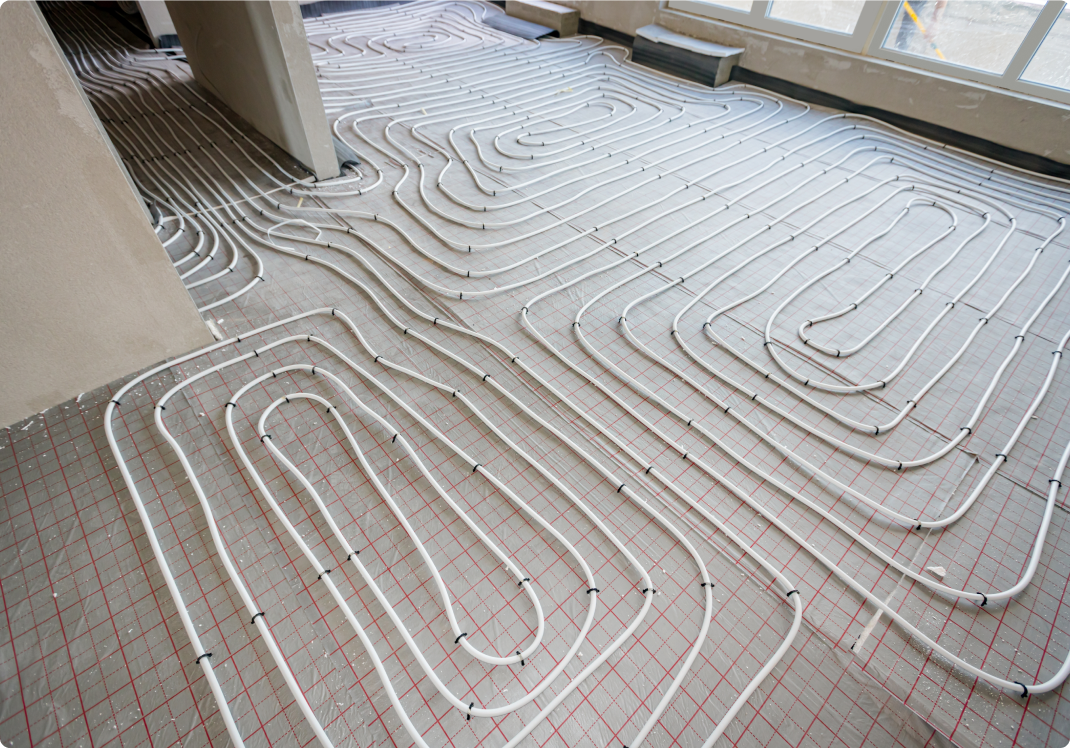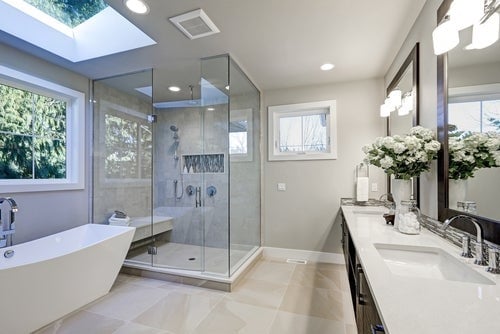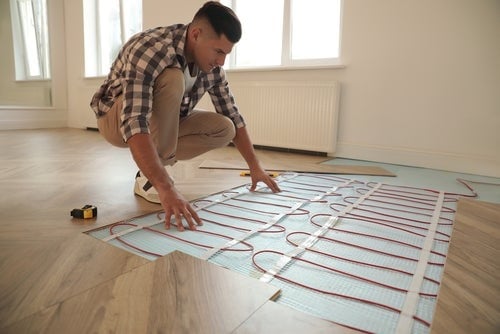If you live in a region that experiences all four seasons, you know just how frigid your floors can be in the winter. You know the routine: You wake up, place your feet on the cold floor, and instantly shiver.
On days like these, the idea of a radiant, or an in-floor, heating system seems less like a luxury item and more like a necessity. Before you commit to this major remodeling project, ask yourself whether radiant floor heating systems are a good idea for your specific home heating needs.
Benefits of In-Floor Heating
Pro: Heated flooring may help you distribute warmth throughout your home more efficiently.
With a forced-air system, your furnace heats the air and then blows it through ducts, which empty through vents and dampers into the various rooms of your home. Because air must be moved or circulated throughout your home, a certain amount of heat loss is inevitable—especially if you fall behind on duct cleaning.
However, with an in-floor heating system, the laws of thermodynamics are on your side. According to Scientific American, heat distribution over the entire surface of a floor heats the lower half of the room, providing warmth at a lower overall temperature—in some cases, up to five degrees cooler—than a conventional heating system.
So, to answer a common question (Do heated floors heat the room?): Yes. Heated floors heat the entire house.
Additionally, radiant heating systems turn on and off less frequently than conventional forced-air HVAC systems or hybrid heating systems, meaning less energy usage. If you do run into problems with your current HVAC system, check out our guide on what to do when your central heating isn’t working.
Pro: Radiant floor heating is compatible with many sources of energy.
Homeowners have a variety of options to choose from when powering a floor heating system. Radiant systems are compatible with:
- Electrical
- Natural gas
- Solar
- Geothermal energy sources
Furnace systems are typically restricted to running on a single energy source, such as heating gas. If the market for that energy source turns volatile, rates can fluctuate, and you can end up paying more to heat your home regardless of how low you set your thermostat.
Pro: You may be eligible for discounts.
So, is it expensive to run in-floor heating? Not necessarily. Depending on the energy source used to heat your home, your in-floor heating system may be eligible for state or federal rebates or tax credits.
According to Forbes, homeowners can expect to pay:
- $6–$20 per square foot for hydronic-heated floors
- $8–$15 per square foot for electric-heated floors
- $18–$25 per square foot for solar-heated floors
- $7–$17 per square foot for geothermal-heated floors
- $6–$18 per square foot for natural gas-heated floors
- $1.50-$7 per day for in-floor heating costs
These heated floor costs do not include tax and labor so any savings can come in handy. Consult the U.S. Department of Energy’s Database of State Incentives for Renewable Energy to see if there are rebates, loans, or tax deductions available for the installation of a more efficient in-floor heating system where you live.
Pro: Radiant heat flooring may come with certain health benefits.
Furnaces can suck all the humidity out of your home, leaving you with parched, cracked skin and throbbing sinuses. However, in-floor heating systems heat surfaces, not the air itself, making them less likely to cause this issue. (Check out our guide on other strategies to improve air quality in your home.)
Also, since they do not rely upon fans, ducts, and registers to distribute hot air, radiant floor heating systems can reduce the amount of dust and seasonal allergens in your home.
Of course, there are alternative ways to heat your home, and they all have their own benefits and drawbacks, so weigh your options carefully!
Pro: Radiant floor heating is versatile.
Homeowners can create custom solutions to meet their floor heating needs. If you do not wish to install heated floors throughout your entire home, you can instead modularize, choosing only to heat one or several rooms from the ground up. This is a nice option for rooms that tend to be hotter than the rest of the home, like laundry rooms or rooms with south-facing windows.







